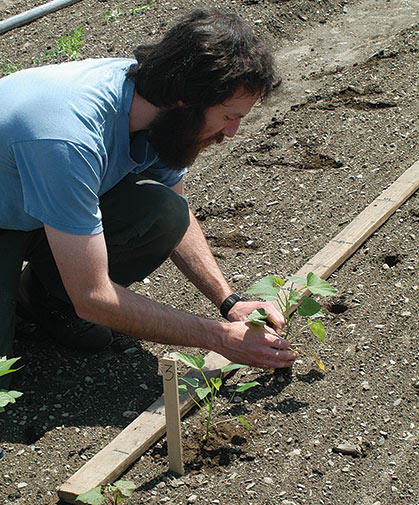Sweet Potatoes - Key Growing Information
SCIENTIFIC NAME:
Ipomoea batatasCULTURE:
Sweet potatoes grow best in well-drained, sandy loam soil with a pH of about 6.5. You will receive bare-root slips. The slips may be dry, wilted, pale or brown in color when they arrive—this is normal. Slips may or may not have visible roots. A lack of visible roots does not negatively impact viability or yield. If planting must be delayed, wrap the root end of the slips in moist paper towels, keeping the leaves and stems dry. Place upright and keep at room temp., out of direct sunlight and wind. Plant out as soon as danger of frost has passed, and soil temp. is at least 60°F (16°C). In cold regions, black plastic mulch may help to warm the soil and is recommended. Plant slips 3-4" deep in raised beds 10-18" apart in rows 36-60" apart. Keep well-irrigated until plants are established.INSECT PESTS:
Sweet potatoes are usually free from major insect infestations, but problems may arise from flea beetles, Japanese beetles, wireworms, and sweet potato weevils (in Southern US).DISEASE:
Avoid diseases such as scurf with crop rotation and by removing all plant debris after harvest.HARVEST:
Dig roots in fall before hard frost and before soil temps. drop to 50°F (10°C). If plants get frosted, harvest as soon as possible—frost damage will travel from the plants down into the roots, and affect storage quality.STORAGE:
Brush soil from roots and cure in a warm 85°F (29°C), dark, humid (85% RH) and well-ventilated place for 4-7 days to toughen skin. Store at 60° (16°C), in a dark, humid place and avoid unnecessary handling.


